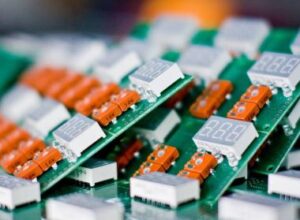How to Clean Printed Circuit Boards?
2023-02-17Printed circuit boards may be affected by various contaminants during use. To prevent circuit failure due to corrosion, cleaning after PCB soldering is necessary to ensure the reliability, electrical specifications and working life of electronic equipment.
How do I clean a printed circuit board?
Cleaning printed circuit boards is a very delicate process. When you work with printed circuit boards, you are dealing with a variety of exposed components and connections that can easily be damaged if you try to clean the board incorrectly.
How you will clean the printed circuit board depends greatly on the type of contaminants you are dealing with.
1. Clean the dust or dirt
Dust and dirt can easily get into a printed circuit board and render the device unusable, and there are several ways to deal with it.
- Brushing. Use a small brush to carefully remove dust or dirt from the circuit board without damaging the components.
- Compressed air. Compressed air is a common method for removing dirt and dust from electronic components, but there is a risk of damaging the connections.
- Electronic component vacuums. These are special vacuums used by some manufacturers to clean electronic components.
2. Cleaning wet contaminants
- Wet contaminants such as soda, dirt or oil can form a sticky film on the printed circuit board and also allow additional dust and dirt to adhere to it.
- Isopropyl alcohol.
Using a cotton swab or small cotton tool, dip the swab into the alcohol and wipe over the contaminated part of the board to gently clean the PCB. It is worth noting to ensure that you are in a well-ventilated environment because of the possibility of toxic fumes.
- Soften the water.
If you do not want to use alcohol or do not have access to alcohol, you can use softened water instead.
- Specialized cleaners.
You can find PCB cleaners tailored to specific wet contaminants at many electronics wholesalers or retailers.
3. Clean up solder residue
PCBs always have varying degrees of flux residue and other types of contaminants on their surfaces after soldering, even with low solids, halogen-free, no-clean fluxes.
Removal of corrosion to ensure the smooth conduct of component electrical performance testing, excessive flux residues in the solder joint will make the test probe can not be good contact with the solder joint, thus affecting the correctness of the test results.
4. Ultrasonic PCB cleaning
Ultrasonic PCB cleaning is a universal cleaning method through the cavitation effect.
The machine will send high-frequency sound waves filled with cleaning solution in the tank, billions of tiny bubbles rupture, will be any contaminants from the printed circuit board blown away.
This method, however, can separate component end caps, loosen connections, and otherwise damage components.
KingPCB has clean, high-quality boards for all your applications
KingPCB, one of the industry's leading suppliers, offers you a wide range of materials and high-quality printed circuit boards. For more information about PCBs, contact Kingpcb today or send emails to sales@kingpcb.com




